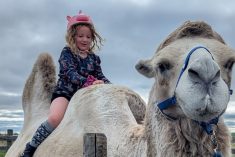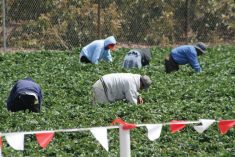Diverse species of trees and shrubs contribute to the health, function, and beauty of your property, says the province’s agroforestry and bioenergy specialist.
“A variety of tree and shrub species can be found in Alberta’s urban and rural areas including ones that, in theory, should not be grown here at all due to our harsh climate conditions,” said Toso Bozic. “However, they are doing just fine on our farms, acreages, cities and towns, and provide great beauty and diversity alongside our native tree and shrub species.”
Read Also

Canola’s clubroot success story
At one time, scientists, agronomists and growers were extremely worried clubroot would spread across the Prairies and devastate Canada’s canola industry.
Having variety of trees and shrubs is a bulwark against disease outbreaks.
“If you have only a few species of trees or shrubs, an insect or disease outbreak will instantly have an impact and can kill them all at once,” said Bozic. “In a group of diverse trees and shrubs, the pest that damages one particular species will not affect the other species’ health and vigour, while another species’ beneficial insects or bacteria may control unwanted pests.”
It’s a similar story when it comes to drought, flooding, and sudden cold snaps.
“Each variety has its own way to adapt to those conditions, boosting the chance of its own survival as well as the survival of the whole ecosystem.”
Each tree and shrub also creates its own ecosystem, and collectively form a more complex forestry ecosystem. Having more diverse trees and shrubs will improve soil nutrients; create a different microclimate; and attract wildlife and beneficial insects, said Bozic.
Other benefits include more genetic diversity and higher property values from attractive landscaping.
But when choosing species, you need to consider a number of factors, including soil type and moisture, shade or full sunlight, exposure, space, drought, and frost-free days. Characteristics such as size, shape, form, bark colour, flowering colour and patterns, and growth rate should also be considered.
Property owners may also consider the merits of native and introduced tree and shrub species, said Bozic.
“Native species are naturally adaptive to our environment, but many introduced species are also adaptive and very hardy here,” he said. “Some species may not thrive here but still survive in our climate.”
A little scouting of your area is a good way to get ideas about potential species.
“People love to see new and unusual trees and shrubs in their neighbourhood, farm, or community,” he said. “A quick look around your neighbours’ property, and the parks and boulevards of your cities and towns, may give you some ideas for what to plant,” says Bozic. “Be creative and experiment.”
For more information, go to www.agriculture.alberta.ca (search for ‘trees and plants’) or contact Bozic at 780-415-2681.















